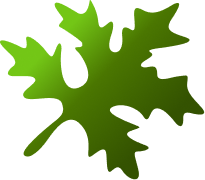While your newly installed insulated metal roof and wall panels will remain functional and attractive for many years to come, you need to protect your investment with periodic cleaning.
“The attractive appearance of a painted building is the result of an engineered product manufactured under carefully controlled conditions,” says the United States Steel Corporation Technical Construction Bulletin on “Cleaning Painted Metal Buildings”.
The good news is the fluoropolymer, silicone polyester, and polyester coatings on insulated metal roof and wall panels are typically resistant to many elements found in the environment such as air pollution, acid rain and general airborne dirt.
Coating systems manufacturer Valspar, however, cautions: “Although Valspar factory-applied finishes are extremely durable, a period cleaning to remove build-ups of resins and other residue is a good idea to extend coating life.”
U.S. Steel also reminds building owners that all painted buildings chalk and retain dirt to some degree.
“A building may start to look old or dull even though it still has a long life left,” says U.S. Steel. “Often, the only thing the building needs is cleaning. Removal of the dirt restores much of the building’s brightness and the original color.”
Common Issues that Require Cleaning
U.S. Steel says that the common type of contaminants you may find on your insulated metal roof and wall panels may include:
- Airborne Dirt can collect on the building along with greasy, organic residues, which cannot be removed by rainwater.
- Chalk is a natural white by-product of ultraviolet degradation of the paint system. Over a period of several years, a light white chalky film is produced on the surface of the paint film, which makes colors appear lighter and reduces the natural gloss of the original paint.
- Mildew, or more generally, biological growth, commonly appears on surfaces which remain moist for extended periods such as north walls, under eaves or sheltered areas.
- Rust Stains may be caused by rundown from steel debris left on the building following erection, unprotected cut edges, or similar situations. These sources of rust stain should be eliminated prior to cleaning.
Graffitti, dust, mud, mortar, excess sealants, and any other types of foreign substances should be cleaned from your metal panels.
Always Start Simple: Plain Water
While a variety of methods can be used to remove surface deposits from metal buildings, Valspar recommends starting simple by using plain water using hoses or pressure spray equipment.
When heavier deposits remain after washing with plain water, stronger methods will be needed to clean.
Valspar says to remember two precautions before cleaning:
- Do not use wire brushes, abrasive or similar cleaning tools which will mechanically abrade the metal building coatings surface.
- Cleaning agents should be tested in an inconspicuous area before use on a large scale
Cleaning Your Metal Building with Detergents and Solvents
Valspar groups the cleaning options for your metal building into different groups:
- Hot or Cold Detergent Solutions: A 5 percent solution in water of commonly used commercial (non-industrial detergents) will not have any destructive effect on your surface. These solutions should be followed by an adequate rinse of water. Use a cloth or sponge for application.
- Solvents: Most organic solvents are flammable and/or toxic and must be handled accordingly. Read the manufacturer’s Material Safety Data Sheets (MSDS). Keep away from open flames, sparks, and electrical motors. Use adequate ventilation, protective clothing, and goggles. Solvents that may be used to remove non-water soluble deposits such as tar, grease, oil, paint, and graffiti from surfaces include:
- Alcohol:
o Denatured alcohol (ethanol)
o Isopropyl alcohol (rubbing alcohol)
- Petroleum Solvents and Turpentine:
o VM&P naphtha
o Mineral spirits
o Kerosene
o Turpentine (wood or gum spirits)
- Aromatic Chlorinated:
o Xylol (Xylene)
o Toluol (Toluene)
- Aromatic Chlorinated:
o Xylol (Xylene)
o Toluol (Toluene)
The above solvents should be used with caution on surfaces and contact limited with solvent to five minutes maximum and test before using.
- Ketones, Esters, Lacquer Thinner and Paint Remover:
o Methyl isobutyl ketone (MIBK)
o Ethyl acetate (nail polish remover)
o Butyl acetate
o Lacquer thinner
o Paint remover (non-flammable)
The above solvents should be used cautiously and limit contact to surfaces while testing before using. Note: There are many formulations of paint remover on the market. It is possible that some will remove the surface coating. Proceed very cautiously in use of paint remover.
Special Concern: Graffiti, Mildew and Rust
Graffiti is unfortunately something many building owners may have to address.
“Graffiti presents a special problem because of the many agents used, generally aerosol paint. It is best to try soap and water first, then solvents. If not of these are satisfactory, it may be necessary to resort to touch up, repaint or replacement,” says Valspar.
As for mildew, which can happen in areas subjected to high humidity levels, the following solution may remove the mildew:
- 1/3 cup dry powdered laundry detergent (such as Tide)
- 1 quart sodium hypochlorite 5 percent solution (such as Clorax)
- 3 quarts of water
For rust stains, Hydrochloric, citric, or muriatic acid, diluted with ten volumes of water, may assist in removing them from surfaces. Limit contact to five minutes. Oxalic acid solutions or acetic acid (vinegar) may be used for the same purpose. Flush with water.
Keep in mind that acid solutions are corrosive and toxic so always flush all surfaces with copious amounts of water after use.
Contact Green Span Profiles today to find out about our state-of-the-art insulated metal panels for your cold storage needs.






